In an update to this story, Ofcom confirm Carter to leave
![]() A reasonably insightful interview with Ofcom’s Stephen Carter by Maggie Brown in Monday’s Guardian. There is a suggestion that Carter is looking to move on – which would mean that the implementation of many of the key recommendations/agreements from the various strategic reviews he has overseen will fall to someone else (most likely – Ofcom’s COO – Ed Richards).
A reasonably insightful interview with Ofcom’s Stephen Carter by Maggie Brown in Monday’s Guardian. There is a suggestion that Carter is looking to move on – which would mean that the implementation of many of the key recommendations/agreements from the various strategic reviews he has overseen will fall to someone else (most likely – Ofcom’s COO – Ed Richards).
Brown suggests that Carter will be judged by the decisions he has taken in regard to ITV – particularly the decision to scale back ITV regional programming obligations. In reality I think the industry – both media and telecoms – are likely to judge Carter by the regulatory settlement he got out of BT.
![]() However, interesting to note the use of what Carter refers to as the “‘soft power’ of influence” in regard to decisions taken on ITV. Apparently others – including the ‘independent’ Content Board’ – favoured a different approach on scale backing PSB obligations but didn’t get their way.
However, interesting to note the use of what Carter refers to as the “‘soft power’ of influence” in regard to decisions taken on ITV. Apparently others – including the ‘independent’ Content Board’ – favoured a different approach on scale backing PSB obligations but didn’t get their way.
Other interesting points from the article –
- 1. Production Supply Market Review – which is published tomorrow. Carter says Ofcom has not tried to rewrite the ITC’s ‘terms of trade’ agreement made in 2003. He states,
“We will make it clear that we are not intending to redraw the terms of trade on a short-term basis or whim, given that they have had a relatively short period of time to bite. The 2003 agreement will stand.” Asked for his views about the seven-day window agreed between the BBC and Pact, the independent producers’ body, he says: “It is too electric a subject to speculate on.”
- 2. BBC – Carter stands by Ofcom’s position that the licence fee money should be ‘contestable’. This reiterates the advice of the independent Burns’ Panel who looked at the BBC structure and funding. However, the government didn’t go with it in the Green Paper on the BBC’s future, and it is unlikely to be in the White Paper. In my opinion this is also the right thing to do- although there will be plenty of people who disagree.
It will be interesting to see where Carter moves – if he does – my money would be on BSkyB (or News Corporation). Of course there will always be a role for him at Ofcomwatch – if he fancied a hands on role in new media.
Luke Gibbs is a co-founder of OfcomWatch
Ofcom
 A new UK survey shows a dramatic increase in the use of picture messaging with WAP also growing in popularity.
A new UK survey shows a dramatic increase in the use of picture messaging with WAP also growing in popularity. When it comes to seeking mobile information online, it’s the geezers who are keenest to get their keypads rattling, with 38% accessing mobile Internet (WAP) sites compared to 26% of ladies.
When it comes to seeking mobile information online, it’s the geezers who are keenest to get their keypads rattling, with 38% accessing mobile Internet (WAP) sites compared to 26% of ladies.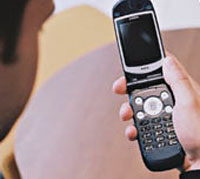 Elsewhere, the Mobile Data Association have calculated that WAP page impressions are now approaching the 2 billion per month mark, with the Mobile Media Monitor revealing the most popular types of site on the mobile internet.
Elsewhere, the Mobile Data Association have calculated that WAP page impressions are now approaching the 2 billion per month mark, with the Mobile Media Monitor revealing the most popular types of site on the mobile internet.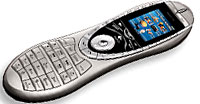 If you haven’t been to CES, you may have heard of the headache inducing noise, leg-ache inducing size and debt-ache inducing taxis and hotel rooms. We’ll save you all that and run over the highs and lows from this year’s CES 2006 show – shame we can’t help out with the glitzy lights of Las Vegas.
If you haven’t been to CES, you may have heard of the headache inducing noise, leg-ache inducing size and debt-ache inducing taxis and hotel rooms. We’ll save you all that and run over the highs and lows from this year’s CES 2006 show – shame we can’t help out with the glitzy lights of Las Vegas. Satellite radios from XM and Sirius while Toshiba’s new HD-DVD playing Qosmio laptop gathered attention. It’s the first laptop to debut with a built-in HD-DVD player. The laptop can also play hi-def discs on your TV. The Qosmio is expected to hit the streets in March 2006 – months before the first Blu-Ray boxes are due out.
Satellite radios from XM and Sirius while Toshiba’s new HD-DVD playing Qosmio laptop gathered attention. It’s the first laptop to debut with a built-in HD-DVD player. The laptop can also play hi-def discs on your TV. The Qosmio is expected to hit the streets in March 2006 – months before the first Blu-Ray boxes are due out. It looks great, but you’ll need deep pockets and an understanding partner to justify forking out $399 for a humble remote control.
It looks great, but you’ll need deep pockets and an understanding partner to justify forking out $399 for a humble remote control. Elsewhere, the PC World editors were less than impressed with the ongoing willy-waving battle for the biggest plasma screen, arguing that they’d prefer it if the manufacturer’s considerable energies were directed into producing affordable plasmas for regular folks.
Elsewhere, the PC World editors were less than impressed with the ongoing willy-waving battle for the biggest plasma screen, arguing that they’d prefer it if the manufacturer’s considerable energies were directed into producing affordable plasmas for regular folks.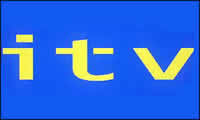 Speculators with a wad of cash might like to consider convert said cash into an ITV plc share holding in the next few days some feel.
Speculators with a wad of cash might like to consider convert said cash into an ITV plc share holding in the next few days some feel. Unlike Sky, which is principally a broadcast platform owner and call centre operator, ITV actually has what companies with desires to be fully-grown media giants badly need; content and a fifty year plus heritage of making TV programmes.
Unlike Sky, which is principally a broadcast platform owner and call centre operator, ITV actually has what companies with desires to be fully-grown media giants badly need; content and a fifty year plus heritage of making TV programmes. Interestingly, after
Interestingly, after  Mr Gates, speaking in the keynote address at the Consumer Electronics Show (CES) in Las Vegas, evangelised the “arrival of the much-trailed ‘digital lifestyle’” (which of course, we here at Digital Lifestyles just loved when
Mr Gates, speaking in the keynote address at the Consumer Electronics Show (CES) in Las Vegas, evangelised the “arrival of the much-trailed ‘digital lifestyle’” (which of course, we here at Digital Lifestyles just loved when 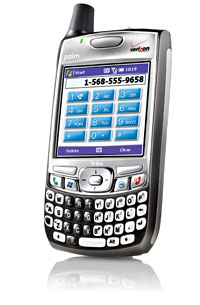 Palm have finally announced the launch of their much anticipated Windows Mobile powered Treo 700w smartphone.
Palm have finally announced the launch of their much anticipated Windows Mobile powered Treo 700w smartphone. The transition to Windows has, however, seen the TFT screen resolution shrink from Palm’s 320 x 320 pixels to a more miserly 240 x 240 pixels (the same as the Treo-alike HP iPAQ hw6500 series). Early reports suggest that the screen is somewhat washed out compared to the current Palm Treo 650.
The transition to Windows has, however, seen the TFT screen resolution shrink from Palm’s 320 x 320 pixels to a more miserly 240 x 240 pixels (the same as the Treo-alike HP iPAQ hw6500 series). Early reports suggest that the screen is somewhat washed out compared to the current Palm Treo 650.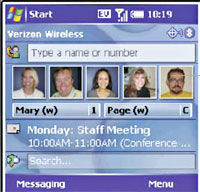 The removable battery gives up to 4.7 hours of talk time or up to 15 days of standby.
The removable battery gives up to 4.7 hours of talk time or up to 15 days of standby. If Palm have successfully managed the transition to the Windows platform, we can expect this new smartphone to be a winner, although we do wonder what long-term impact it may have on their Palm OS range.
If Palm have successfully managed the transition to the Windows platform, we can expect this new smartphone to be a winner, although we do wonder what long-term impact it may have on their Palm OS range. Factory sales of consumer electronics are set to soar to a record high of $135.4 billion (~£77bn ~Ä112) in 2006, according to the Consumer Electronics Association’s annual industry forecast.
Factory sales of consumer electronics are set to soar to a record high of $135.4 billion (~£77bn ~Ä112) in 2006, according to the Consumer Electronics Association’s annual industry forecast. Projections for 2006 and year-end figures for 2005 are included in CEA’s bi-annual US Consumer Electronics Sales and Forecasts report, released every year at the International CES and updated mid-year.
Projections for 2006 and year-end figures for 2005 are included in CEA’s bi-annual US Consumer Electronics Sales and Forecasts report, released every year at the International CES and updated mid-year. In 2005, DTV sales grew 60 percent to $17 billion, with the market fuelled by the growing popularity and competitive price declines of flat panel LCD and plasma displays, which accounted for 40 percent of all DTV sales.
In 2005, DTV sales grew 60 percent to $17 billion, with the market fuelled by the growing popularity and competitive price declines of flat panel LCD and plasma displays, which accounted for 40 percent of all DTV sales.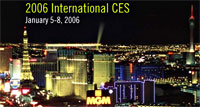 “MP3 technology helped boost the audio and accessories markets in 2005. With the introduction of video playback capability, MP3 player sales surged 200 percent in 2005 to $3 billion. Trends in 2006 should be no different,” he added.
“MP3 technology helped boost the audio and accessories markets in 2005. With the introduction of video playback capability, MP3 player sales surged 200 percent in 2005 to $3 billion. Trends in 2006 should be no different,” he added.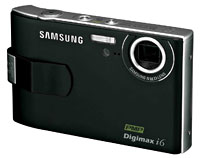 With consumers being less enamoured with ever bigger megapixel ratings, some camera manufacturers are looking to ramp up the feature list, while getting all Lilliputian with the form factor.
With consumers being less enamoured with ever bigger megapixel ratings, some camera manufacturers are looking to ramp up the feature list, while getting all Lilliputian with the form factor.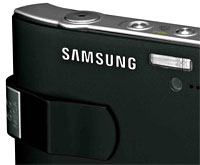 Unlike some of the half-arsed hybrid MP3 cameras we’ve seen, the Samsung lets the user take pictures whilst listening to music. We can’t think why you’d actually want to do that, but I’m sure some will find it useful.
Unlike some of the half-arsed hybrid MP3 cameras we’ve seen, the Samsung lets the user take pictures whilst listening to music. We can’t think why you’d actually want to do that, but I’m sure some will find it useful.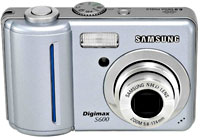 Samsung will also launching three new models in their budget, point’n’shoot ‘S’ series offering 5, 6 and 8 megapixels, 3x optical zoom, video (MPEG4, VGA, 30fps) and a large TFT LCD (2.4 inch).
Samsung will also launching three new models in their budget, point’n’shoot ‘S’ series offering 5, 6 and 8 megapixels, 3x optical zoom, video (MPEG4, VGA, 30fps) and a large TFT LCD (2.4 inch). The BBC has announced its Open News Archive, making archive news reports freely available to the UK public to download and use for free in their own creative works.
The BBC has announced its Open News Archive, making archive news reports freely available to the UK public to download and use for free in their own creative works. Made available under the terms of the recently-launched Creative Archive Licence, the footage can be viewed, downloaded, edited and mixed by UK residents – so long as it’s for non-commercial programming (there’s also several other caveats that budding film makers should read first
Made available under the terms of the recently-launched Creative Archive Licence, the footage can be viewed, downloaded, edited and mixed by UK residents – so long as it’s for non-commercial programming (there’s also several other caveats that budding film makers should read first  Helen Boaden, Director, BBC News, said: “This trial is an important step in allowing us to share with our audiences the extraordinary news archive which the BBC has recorded over the years. We look forward to getting their reaction.”
Helen Boaden, Director, BBC News, said: “This trial is an important step in allowing us to share with our audiences the extraordinary news archive which the BBC has recorded over the years. We look forward to getting their reaction.” The BBC already offer nearly a hundred clips in their
The BBC already offer nearly a hundred clips in their  The BBC has decided to extend the trial for the iMP Player until 28th February 2006, telling trialists that the extra time will enable it to “understand what you want from the service and how you are using it”. A new upgrade of the software is due to be rolled out to the participating trialists in January.
The BBC has decided to extend the trial for the iMP Player until 28th February 2006, telling trialists that the extra time will enable it to “understand what you want from the service and how you are using it”. A new upgrade of the software is due to be rolled out to the participating trialists in January.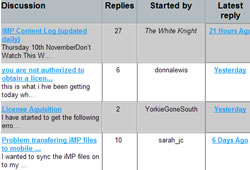 The BBC’s reaction to such sniping is consistent, if not a little bland
The BBC’s reaction to such sniping is consistent, if not a little bland